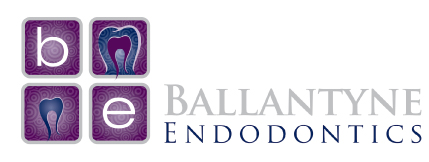Patient Case: Saving a Child’s Tooth Trauma
 I have a story to share with you about a young boy who knocked out (avulsed) his front tooth when playing with a friend. When the tooth injury happened his mom was frantic and couldn’t find a dentist who could help them immediately.
I have a story to share with you about a young boy who knocked out (avulsed) his front tooth when playing with a friend. When the tooth injury happened his mom was frantic and couldn’t find a dentist who could help them immediately.
She had the foresight to put the tooth back in, but because it was late at night she was worried that her son might choke on it while he was sleeping, so she took the tooth back out of the socket and placed it in milk overnight. First thing in the morning, she tried to put it back in, but a clot the area of the tooth prevented her from doing so. She replaced the tooth in milk and finally got in to see their dentist the day after the accident. This meant the tooth was out for a total of 15 hours!
Her dentist reimplanted the tooth and then splinted it in place using an NiTi orthodontic wire. They then monitored the tooth injury for some time “to see if the tooth would heal on its own.”
Over a month later, there was evidence of resorption on the tooth (the loss of dentine and cementum) as well as bone loss. That’s why my office received the referral. In the x-ray below you can see the resorption in 2 places, along with some bone loss around the root of the tooth.
What can be learned from this case
I’m very sensitive when it comes to child patients, because I feel like teeth are such an important part of making someone who they are. I can’t imagine living without my front tooth growing up; it would’ve had such a huge impact on my self-esteem.
This case got me pretty fired up when I met this boy! I feel like several pieces of his case were mismanaged, and I really had to bite my tongue.
I thought to myself, If that dentist didn’t know the trauma guidelines, then chances are, others don’t know them, either. This is an important case to share because I think dentists and the general public alike can learn many lessons here. My hope is we can save children’s teeth from this blog post!
Three things that went wrong, and what can be done instead
At least three things went wrong in this tooth avulsion case, so I want to offer alternative solutions.
Issue #1:
First, the time that the tooth was out of the mouth was long. Based on this information alone, patients have to be prepared to expect some resorption and possible loss of tooth. The good news is that my patient’s mother did put the tooth back in; she took it back out at night and the next day, during which time she put it in milk.
What can be done:I want to educate patients that milk will help avulsed (knocked out) teeth about 6 hours, and the best thing to do is put the tooth back in the socket. Let’s educate everyone on what to do when a tooth is avulsed. We could save smiles everywhere with this one little piece of information.
Issue #2:
Second, the first dentist used NiTi ortho wire as a splint, and the splint was in place too long. Additionally, splinting too long can cause replacement resorption, so a splint should not be used any longer than necessary.
What can be done:Studies show that, in cases like this, the best results come from using a physiologic splint, like a monofilament fishing line. This allows for some movement of the periodontal ligament and decreases the risk of replacement resorption (ankylosis). With an avulsion, you only need to splint for about 2 weeks, and definitely no longer than 4 weeks. Splinting too long can also increase your chances of resorption.
Issue #3:
Third, waiting to do a root canal as long as occurred in this case can cause inflammatory resorption.
What can be done: After an avulsion with a fully formed root, root canal therapy should be started around 10-14 days after the trauma.
What happened? Stay tuned…
We were able to start the boy’s treatment right away when he was referred to our office. We immediately removed the splint and cleaned the canal to remove the bacteria. Next, we placed calcium hydroxide paste in the canal to medicate over time. The calcium hydroxide will sit in the tooth for one month, after which we’ll switch to a USP calcium hydroxide mix to pack into the canal. That will sit for a few more months, until we see the periodontal ligament to re-establish itself.
My brave patient is still in treatment, so stay tuned to the blog for an update when all is said and done. We don’t know what the outcome will be just yet, but we are hopeful that we can save this tooth injury!
Takeaways:
- After an avulsion, rinse the tooth of debris and get the tooth back in right away! If the root looks dirty, rinse ONLY with Hank’s Balanced Salt Solution, (it’s proven to be the best, hands down), or alternatives are a saline solution or milk (low-fat milk is best, but any milk will do). Do NOT use water.
- Keep the tooth in place until you can get treatment.
Originally published on www.soniachopradds.com

